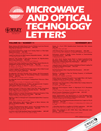Performance analysis of metallic carbon nanotubes as nanotechnology circuit interconnects†‡
The views and conclusions contained in this document are those of the authors and should not be interpreted as presenting the official policies or position, either expressed or implied, of the U.S. Army Research Laboratory or the U.S. Government unless so designated by other authorized documents. Citation of manufacturer's or trade name does not constitute an official endorsement or approval of the use thereof. The U.S. Government is authorized to reproduce and distribute reprints for Government purposes notwithstanding any copyright notation hereon.
This article is a US government work and, as such, is in the public domain in the Unites States of America.
Abstract
Carbon nanotubes (CNTs) have emerged as a potential nanoelectronic material that can replace traditional copper as the material for very large scale integrated circuits (VLSI) interconnects.In this article, we have quantified the performance expected out of CNTs-based interconnect systems based on realistic characterization of their Tomonaga Luttinger theory-based transmission line model. We have presented performance estimates for bus systems consisted of single-walled nanotubes and crystalline bundles of CNTs. Results indicate that the bundles offer at leasta 10 times performance advantage over isolated nanotubes. However, this is at the expense of larger signal damping associated with them. Published 2011 Wiley Periodicals, Inc. Microwave Opt Technol Lett 53:2505–2508, 2011; View this article online at wileyonlinelibrary.com. DOI 10.1002/mop.26314




